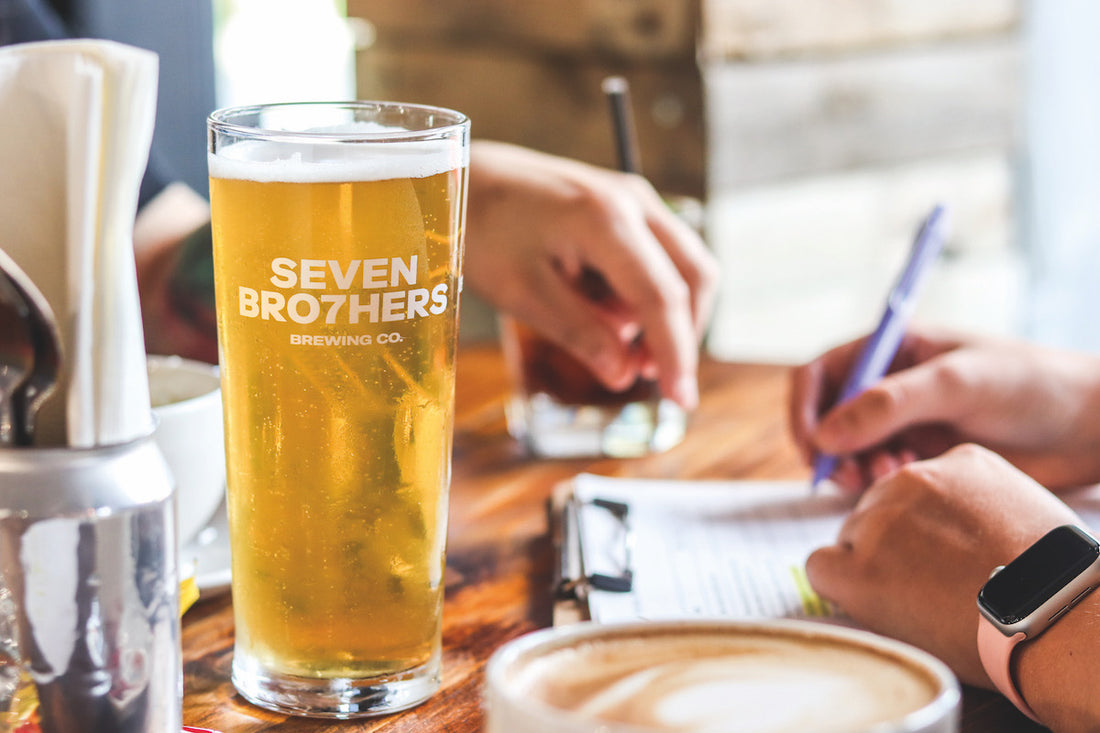Yes you can!
While beers are produced with expiry dates, you don’t always have to adhere to these.
If you look on the back of a beer, wine or cider bottle, you’ll likely see a ‘best before’ date. This is different to a ‘use by’ date you’ll usually see on fresh foods like meat and dairy products.
Here’s the difference: ‘use by’ is pretty much a rule. After the stated date, degradation happens quickly, and bacterial build-up means the taste, consistency and safety of the food/drink is compromised. You’re in danger of getting ill if you go past a ‘use by date’, so be wary of the risks.
‘Best before’ is more of a guideline on quality, rather than safety. It means the item in question will start to lose its quality after the stated date. You can still eat or drink it after this, but it just won’t be as good. It’s usually found on products that don’t need putting in the fridge or freezer, and there’s a big variety in the date ranges between different foods.
You won’t see these on spirits, though, as neat liquor lasts practically forever.
How long does beer last for?
So, beer. How long does it last? Its ‘best before’ quality changes over quite long time spans, and it differs depending on the beer type.
A typical lager will be drinkable 6 – 24 months after its best before date, if it’s been kept in the fridge. That timeframe tops out at 9 months if it hasn’t been refrigerated, though.
Some beers, like people, can actually improve with age. In the same way that wine and whiskey are matured over long timespans, the richer and higher ABV varieties of beer such as porters and stouts can certainly get better with age. This happens best if they’re kept in cool, dark storage conditions like a basement or cellar.
IPAs, on the other hand, don’t fit into this category – especially the hoppy ones. They gradually lose their flavour and aroma over time and are best drunk sooner rather than later.
The difference in the above is caused by the organisms that are used in the brewing process. When yeasts are used to produce flavours in speciality beers like lambics and saisons, they change the flavour over time, living in the beer for years, consuming sugar and oxygen to ferment its ingredients.
How to store beer so it doesn't go bad
So, you’ve bought some tasty new beers. A crisp lager or tangy IPA, maybe. You’re looking forward to drinking them, but it’s Monday evening and you’re being good. What to do with them?
The first thing to note is that if they were refrigerated when you bought them, keep it that way, and put them in your fridge as soon as you get home. Otherwise, the changes in temperature could have an adverse effect on the flavour. And if they’re in bottles, make sure you store them upright. If you don’t need to refrigerate them straight away, make sure you keep them in a cool, dry place, out of direct sunlight where they won’t be disturbed.
How can you tell if a beer has gone bad?
Well, it should be fairly obvious from the bad aroma, but also, if it’s missing the usual ‘pssst’ sound and foaming at the top when you open it, it could well have turned. You could also look at the bottom of the bottle for excessive sediment which could contribute to a poor taste.
